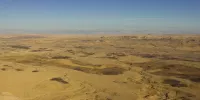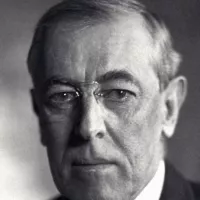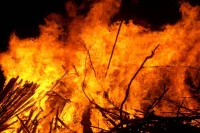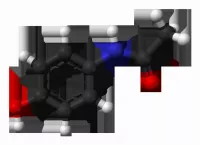Acadia National Park, situated along the Maine coast near Bar Harbor, encompasses roughly half of Mount Desert Island, sections of Isle au Haut, the Schoodic Peninsula's tip, and parts of sixteen smaller islands. Its diverse landscape features rocky coastlines, woodlands, lakes, and granite peaks like Cadillac Mountain, the highest point along the U.S. Atlantic coast. It is known for its hiking trails, carriage roads, and scenic ocean views.
3 hours ago : Acadia National Park Faces Uncertainty Amid Looming 2025 Government Shutdown
Acadia National Park and other US national parks are facing uncertainty as a government shutdown looms in 2025, potentially impacting visitors and park operations. The shutdown's effects remain a concern as the deadline approaches.
1908: First Land Donated
In 1908, Mrs. Eliza Homans of Boston donated the first land for the establishment of the park.
1909: Charles W. Eliot Supported Acadia National Park
In 1909, Charles W. Eliot (president of Harvard) supported the idea for the park through land donations and advocacy.
1914: 5,000 Acres Acquired
By 1914, 5,000 acres of land had been acquired for the park.
1915: Rockefeller Carriage Road Construction Begins
From 1915, John D. Rockefeller Jr. financed, designed, and directed the construction of a network of carriage roads throughout Acadia National Park.
July 8, 1916: Sieur de Monts National Monument Established
On July 8, 1916, President Woodrow Wilson established the federal status of Acadia as Sieur de Monts National Monument, marking a significant milestone.
1916: Acadia Designated Sieur de Monts National Monument
In 1916, Acadia was initially designated Sieur de Monts National Monument by President Woodrow Wilson, marking the beginning of its protected status.
1916: George B. Dorr on Acadia National Park
In 1916, George B. Dorr wrote about Acadia National Park in his work "Acadia National Park: Its Origin and Background".
1916: Since The Park's Founding
Since the park's founding in 1916, climate change has lengthened the growing season by nearly two months, threatening native plants.
February 26, 1919: Lafayette National Park Redesignated
On February 26, 1919, the national monument was redesignated as Lafayette National Park, becoming the first American national park east of the Mississippi River.
1919: Acadia Renamed Lafayette National Park
In 1919, Sieur de Monts National Monument was renamed and redesignated as Lafayette National Park, recognizing the area's significance.
1922: Jordan Pond Road Started
In 1922, construction began on the Jordan Pond Road, a scenic motor highway.
1925: Cadillac Mountain Summit Road Started
In 1925, construction began on the Cadillac Mountain Summit Road, providing access to the mountain's peak.
1927: Jordan Pond Road Completed
In 1927, the Jordan Pond Road was completed, offering a scenic route through the park.
January 19, 1929: Acadia National Park Name Change
On January 19, 1929, the park's name was officially changed to Acadia National Park, honoring the former French colony.
1929: Acadia Renamed Acadia National Park
In 1929, Lafayette National Park was renamed Acadia National Park, solidifying its identity and connection to the region's history.
1930: Beatrix Farrand Designs Planting Plans
Around 1930, landscape architect Beatrix Farrand designed the planting plans for the carriage roads, enhancing their aesthetic appeal.
1931: Cadillac Mountain Summit Road Completed
In 1931, the Cadillac Mountain Summit Road was completed, allowing visitors to reach the summit by vehicle.
1932: Arthur Stupka Joins Acadia National Park
In 1932, Arthur Stupka joined Acadia National Park as its first naturalist and began publishing "Nature Notes from Acadia".
1935: Arthur Stupka Publishes Nature Notes from Acadia
In 1935, Arthur Stupka concluded the publication of "Nature Notes from Acadia", a four-volume serial.
1940: Rockefeller Carriage Road Construction Ends
Until 1940, John D. Rockefeller Jr. financed, designed, and directed the construction of a network of carriage roads throughout Acadia National Park.
1942: George B. Dorr on Acadia National Park
In 1942, George B. Dorr's work "Acadia National Park: Its Origin and Background" was published.
October 17, 1947: Acadia National Park Fire
Beginning on October 17, 1947, a fire consumed more than 10,000 acres of Acadia National Park, causing extensive damage.
1956: Peregrine Falcon Nesting Disappearance
Since 1956, the peregrine falcons disappeared, until their return in 1991.
1961: The Wild Gardens of Acadia Established
In 1961, The Wild Gardens of Acadia was established in the Sieur de Monts area of Acadia National Park, showcasing indigenous plant species.
1980: American Indian Land Claims Settled
American Indian land claims in Maine were legally settled in 1980.
1986: Congress Establishes Park Boundary
In 1986, Congress established the permanent park boundary, defining the extent of Acadia National Park.
1986: Friends of Acadia formed
In 1986, Friends of Acadia (FOA) was founded by Acadia-area residents and park volunteers as a membership-based nonprofit to organize volunteer efforts and private philanthropy.
1989: Bar Harbor Native American Festival Began
The annual Bar Harbor Native American Festival began in 1989, jointly sponsored by the tribes and the Abbe Museum.
1991: American Indian Land Claims Settled
American Indian land claims in Maine were legally settled in 1991.
1991: $3.4 million endowment raised by FOA
Between 1991 and 1996, Friends of Acadia raised a $3.4 million endowment to maintain the park's carriage road system in perpetuity.
1991: Peregrine Falcons Nest in Acadia
In 1991, peregrine falcons successfully nested in Acadia National Park for the first time since 1956, marking a recovery milestone.
1993: Maine Indian Basketmakers Alliance Formed
The Maine Indian Basketmakers Alliance was formed in 1993 to assist in coordinating the annual festival with the museum.
1996: $3.4 million endowment raised by FOA
Between 1991 and 1996, Friends of Acadia raised a $3.4 million endowment to maintain the park's carriage road system in perpetuity.
1999: Acadia Trails Forever and Island Explorer Established
In 1999, Friends of Acadia established Acadia Trails Forever and the Island Explorer, a free propane-powered bus system.
1999: Acadia Youth Conservation Corps Established
In 1999, the Acadia Youth Conservation Corps was established by FOA and endowed by an anonymous donor.
1999: Island Explorer Bus System Begins
In 1999, the Island Explorer bus system began operations to reduce congestion within Acadia National Park.
2001: Acadia Trails Forever funds raised.
Between 1999 and 2001, Friends of Acadia raised $13 million for Acadia Trails Forever.
2002: Schoodic Education and Research Center Established
In 2002, after the naval base on the Schoodic Peninsula closed, the National Park Service acquired the land and established the Schoodic Education and Research Center (SERC).
2011: Acadia Youth Technology Team Established
In 2011, FOA partnered with park administration to establish the Acadia Youth Technology Team.
2014: Red Pine Scale Confirmed
In 2014, the invasive insect known as the red pine scale was confirmed on dying red pines in Acadia National Park.
2015: Permanent Park Boundary
As of 2015, the permanent park boundary included 12,416 acres of privately owned land under conservation easements.
2015: Schoodic Woods Campground Opened
In 2015, Schoodic Woods, the newest NPS campground located on the Schoodic Peninsula, was opened to the public.
2017: Acadia Encompasses 49,075 Acres
As of 2017, Acadia National Park encompasses a total of 49,075 acres, contributing to its diverse landscape.
December 31, 2017: Acadia Encompasses 49,075 Acres
As of December 31, 2017, Acadia National Park encompassed a total of 49,075 acres across various locations.
2018: Park Attendance Increased
In 2018, park attendance increased to 3.53 million, setting a new record for the second year in a row, straining infrastructure.
2018: Infrastructure Maintenance Cost Estimated
In 2018, park officials estimated the cost of needed infrastructure maintenance. The cost was $6 million less than the 2019 estimate.
2019: Infrastructure Maintenance Cost Increase
In 2019, park officials estimated that the cost of needed infrastructure maintenance was $65.8 million, which was a $6 million increase from 2018. This backlog compounds existing problems with environmental management and traffic congestion.
2021: Acadia National Park Visitation Record
In 2021, Acadia National Park saw a record count of 4.07 million visitors, indicating its growing popularity.
2023: Acadia National Park Visitation
In 2023, Acadia National Park recorded 3,879,890 recreational visitors, highlighting its continued appeal.
Mentioned in this timeline

A desert is a landscape characterized by minimal precipitation leading...

Woodrow Wilson the th U S president - was a...
Climate change encompasses global warming and its far-reaching effects on...
Jordan officially the Hashemite Kingdom of Jordan is located in...

Fire is a rapid oxidation process called combustion releasing heat...

Falcons are birds of prey belonging to the genus Falco...
Trending
11 minutes ago Entergy Corp Sees Share Purchases by Diversified, G&S Capital, and Dakota Wealth

11 minutes ago Emma Navarro faces Iga Swiatek in WTA Beijing 2025; streaming and betting odds.

1 hour ago Yom Kippur 2025: Understanding Judaism's Holiest Day, Fasting, and Observances Worldwide.

2 hours ago York and Dauphin County Restaurants Face Compliance Issues After Health Inspections
2 hours ago Mortgage Rates Fluctuate: Impact of Fed Rate Cut and Market Rise Analyzed

2 hours ago Al Horford Reportedly Signs Multi-Year Deal with Warriors; Butler Reacts Hilariously
Popular

Paracetamol also known as acetaminophen is a commonly used over-the-counter...

Charlie Kirk is an American right-wing political activist entrepreneur and...

Candace Owens is an American political commentator and author known...
Turning Point USA TPUSA is a conservative nonprofit organization founded...

Greg Gutfeld is an American television personality known for his...

Kash Patel is an American lawyer and former federal prosecutor...